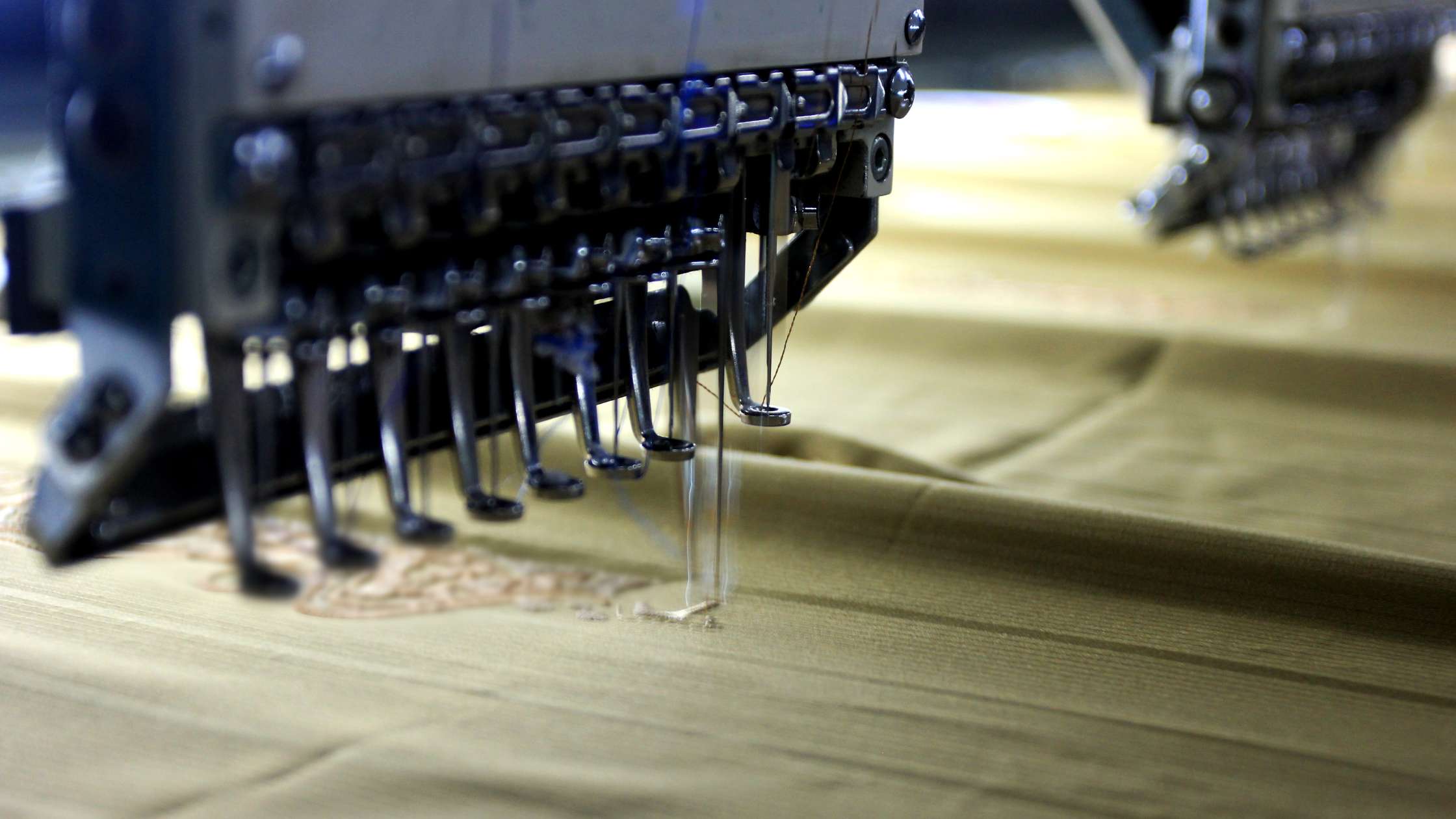Are you curious about the journey of machine embroidery and how it has evolved to where it is today?
It’s fascinating to note that it all started in 1828 with the invention by Joseph Marie Jacquard. This machine utilized punched cards for pattern control, sparking a revolution that led to further innovations and made embroidery a more efficient craft.
As you explore this topic, you’ll see how these early developments laid the groundwork for the sophisticated techniques and technologies we use today. Curious? There is much more to learn!
Origins of Machine Embroidery
Delve into the fascinating origins of machine embroidery, a craft that has seen significant evolution since its inception.
Joseph Marie Jacquard‘s invention in 1828 marked a historical milestone as the first embroidery machine using punched cards for pattern control.
Later in 1846, Josue Heilmann created an embroidery machine that could replace four hand embroiderers.
However, the real game-changer was Isaak Grobli’s Schiffli embroidery machine, introduced in 1863, which enabled the mass production of embroidered textiles.
Early applications were focused on decorative textiles and garments, with textile innovations spurred by the Industrial Revolution.
These key inventors revolutionized the craft, making embroidery more accessible and efficient.
Today, their impact on craftsmanship remains a testament to their ingenuity, with machine embroidery being a notable example.
Technological Progression and Evolution
Embroidery’s tech evolution didn’t stop at the Schiffli machine. As you entered the digital age, software advancements brought about a revolution in the industry.
Digital designs became the norm, replacing traditional punch cards, while machine integration enabled seamless production processes. This resulted in remarkable production efficiency and a significant leap in embroidery automation.
With the ability to digitally manipulate patterns and styles, you could now create complex designs with a few clicks. Multi-needle machines, with their high stitching speeds, further enhanced this efficiency.
The future of machine embroidery is inextricably tied to technology. As such, it’s exciting to imagine what the next tech advancement might bring to this ever-evolving craft.
Techniques and Styles in Embroidery
Exploring the world of machine embroidery, you’ll quickly come across a variety of techniques and styles.
The satin stitch technique is a popular choice for its smooth, sleek finish. Appliqué styles, on the other hand, incorporate pieces of fabric into the embroidery for a layered effect.
You cannot overlook the growing popularity of 3D embroidery, which adds depth and texture to decorative textiles. It is crucial to acknowledge the importance of fabric stabilizers in preserving the integrity of these designs during the stitching process.
As you delve deeper, you’ll discover a myriad of other techniques, each one contributing to the rich tapestry that’s machine embroidery.
It’s a world of creativity just waiting for you to explore.
Current Market and Future Prospects
The machine embroidery market is a thriving industry, valued at approximately $4.5 billion in 2020.
Sustainability practices are making headway, with companies increasingly adopting eco-friendly materials and processes.
Customization trends are driving market competition, as consumer preferences lean towards personalized designs.
Digital advancements are improving the quality and speed of embroidery, with smart machines capable of creating intricate designs.
The future looks promising, with a projected growth fueled by these trends.
However, keep an eye on the evolving consumer preferences, as they directly influence market trends.
Stay ahead in this game by embracing digital innovation and prioritizing sustainability, ensuring your place in the future of the embroidery market.
Community Involvement and Cultural Influence
From a cultural perspective, machine embroidery enjoys a significant place in various regions, enhancing traditional crafts and serving as a medium for personal expression through DIY projects.
You’re not alone in your passion; there’s a whole community ready to engage with you.
Here’s how the world of machine embroidery fosters community involvement and cultural influence:
- Community projects bring together individuals to collaborate and share ideas, fostering social connections.
- Cultural preservation is evident as traditional techniques and styles are adapted to modern machinery.
- Artistic expression is amplified, with boundless design possibilities at your fingertips.
- Social connections are strengthened through shared interests and collaborative endeavors.
- Online collaborations have transformed the landscape, with digital platforms enabling global interaction, learning, and sharing.
Weaving Success with Affordable Digitizing
Affordable Digitizing is a leader in the embroidery industry. They change your creative ideas into beautiful designs with their expert digitizing services.
With a commitment to quality and a deep understanding of the craft’s history, they ensure that every stitch is not just a mark on fabric but a step towards excellence. Their skilled team combines cutting-edge technology with a passion for embroidery, delivering designs that are precise, vibrant, and tailored to meet the unique needs of each client.
Join the ranks of satisfied clients who have experienced firsthand how a great design can transform not just fabric but your entire brand narrative. Embrace the future of embroidery with Affordable Digitizing, where your ideas are woven into every thread.

